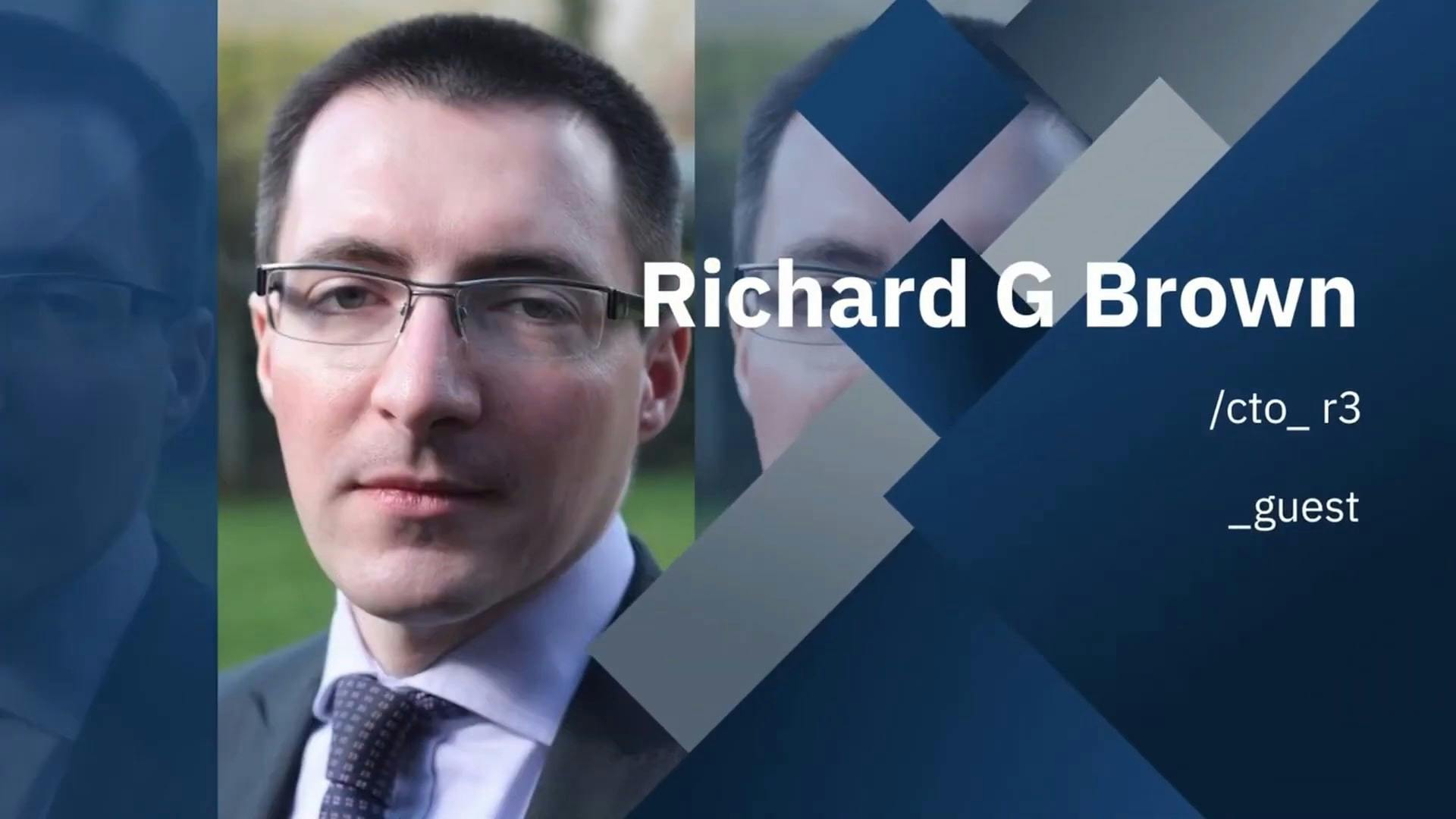R3 was the first enterprise consortium to come on the scene in 2015, when the founders recognized the opportunities the blockchain, or distributed ledger technology, could offer the banking sector and beyond. Richard Brown, R3 chief technology officer, joined Teana Baker-Taylor to discuss how the company’s Corda platform has evolved over the past five years and where it is headed.
He explained how R3 wasn’t originally created as a software firm but instead as an exploratory working group in its first year. The results of that study led to the realization that the market needed a platform that was built from the ground up to solve problems that they were discovering. For instance, all parties involved in complicated syndicated loans needed to be in sync, while inconsistencies and errors between firms needed to be removed.
They also discovered that some of the features that were non-negotiables for Bitcoin work weren’t appropriate for the banking sector. For instance, on Bitcoin, the entire blockchain needs to be replicated to all nodes — and for good reason. In finance, however, the opposite problem is true.
“The only people that should see a deal or know that it exists and then be in sync about it are the parties to that deal. It’s not relevant to anybody else,” Brown said.
R3’s Brown went on to explain that Corda is a platform for writing applications, comparing it to Ethereum. On Corda, software firms, banks, insurance companies and anybody that wants to write applications where the purpose of those apps is to be deployed to and among all participants in the market who are executing a certain type of transaction.
Rather than writing an app for one firm, which is traditional in IT, Corda allows for the writing of applications that automate and improve the processes of an entire market. Corda ensures that all the participants that should receive a copy of the piece of data being managed by the application, such as a loan or insurance policy, have identical versions of that data.
“The catch phrase we use is, when I’m looking at my Corda note, I know for sure that what I see is what you see. We both know that we see the same thing,” said Brown, adding that unlike cryptocurrencies, you only see things you’re supposed to and not transactions you’re not supposed to see.
To make it work, you need the ability to write the applications.
“It’s not sexy, but most app developers in large organizations don’t know things like Solidity or Bitcoin Script. They know Java… So we made it possible to write applications in those languages in Corda,” said Brown.
The R3 team also realized they needed to build a decentralized workflow engine to describe what each participant in the network’s role was, such as buyer, seller, borrower or lender, without a central controller.
R3 started out looking to address the banking use case, which was the most obvious sector. They designed it for the back offices of investment banks, the original R3 backers. Along the way, however, the number of use cases grew.
“We got lucky. This is partly because of the team. I hope some of it was my insight. It’s a huge dollop of luck and a huge dollop of insight…But we ended up with a design that whilst it was derived from all these requirements in financial services, turned out serendipitously to be far more broadly applicable,” said Brown, explaining that while he thought they solved a narrow problem, the market told them that they solved a much broader problem.
Now Corda is being used across sectors, from trade finance to healthcare to oil and gas to gold trading and beyond.
Brown believes there are hundreds of different projects using Corda across the maturity spectrum. Considering that the platform is open source, there are a bunch of projects using the technology that the R3 team doesn’t hear from until they go live and are looking to pay for support. At that point, they discover people using it that they can sell the commercial version to.
Brown also discussed the SPUNTA Banca DLT solution, which is a platform on which 80% of the Italian banking system relies.
“It’s as if you wake up one day and you discover, ‘Oh my God, the Italian banking system now depends on Corda,’” exclaimed Brown.
As for what’s next, Brown pointed to SPUNTA hitting prime-time, noting that there are a bunch of other projects behind them in the early go-live that will hit scale next year. There are some big firms doing projects with Corda, including the likes of Mastercard and the Swiss Digital Exchange, that should hit the mainstream by year-end or into 2021. Meanwhile, the R3 team is deep in planning for Corda 5.
